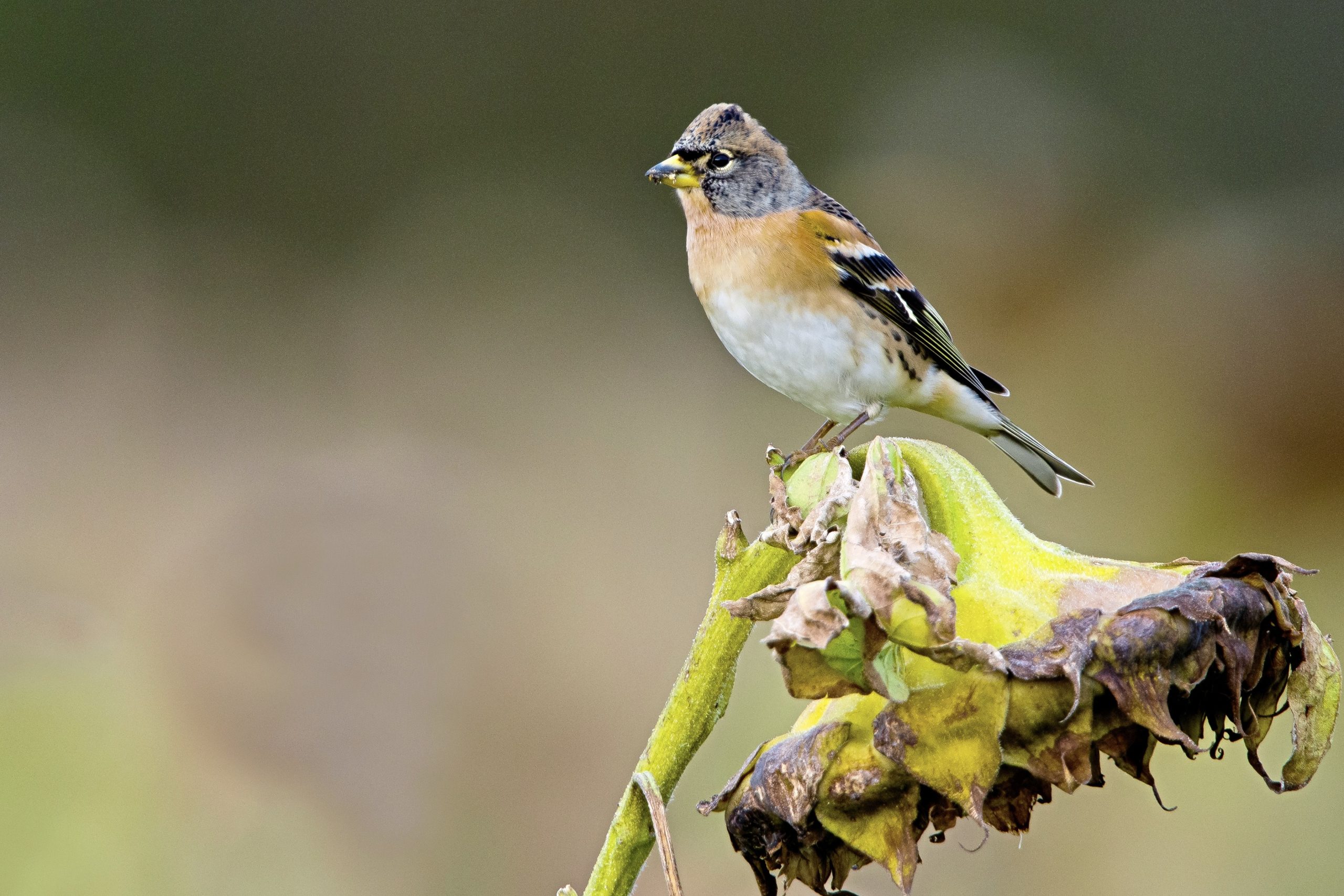Bramblings are native to Scandinavia, Finland and Russia, and when food supplies are low in their natural habitats, between 50,000 and two million birds can migrate to the British Isles. However, only very small numbers usually end up in Jersey.
This winter hundreds of the birds have been spotted feeding in fields specially cultivated to provide food for local and migratory birds as part of the Birds on the Edge project.
‘We probably haven’t seen these numbers of bramblings in Jersey for more than ten years,’ project manager Cris Sellarés said.
‘We don’t know why they are here this winter in such high numbers, but it is possible that their wintering grounds in Europe are too cold or they could have been blown here by the prevailing wind.’
Birds on the Edge was set up five years ago by the National Trust for Jersey, Environment Department and Durrell Conservation Trust to re-introduce the red-billed chough and to create habitats for farmland birds.
These species are falling in numbers across Europe and the British Isles due to the combined effects of climate change, habitat loss and modern farming practices.
This year, six farmers have planted more than 80 fields, covering a total area of 270 vergées, with a special seed mix, including mustard, millet, quinoa and sunflowers.
‘Birds such as chaffinch, greenfinch, goldfinch and linnet started to flock to the crops in late October,’ Ms Sellarés said. ‘Bramblings have been counted at the crops by the dozens, and at some sites by the hundreds, with a particular site holding a 400-strong flock.
‘In comparison, the previous winter only two bramblings were seen over the whole winter.
‘Bramblings hang out with chaffinches and other finches, and will have no problem following them to Islanders’ gardens to feed. So if you start seeing chaffinches in your garden keep your eyes peeled for a brambling.’
Bramblings are similar in size to chaffinches, but they have black heads, orange chests and white bellies.






